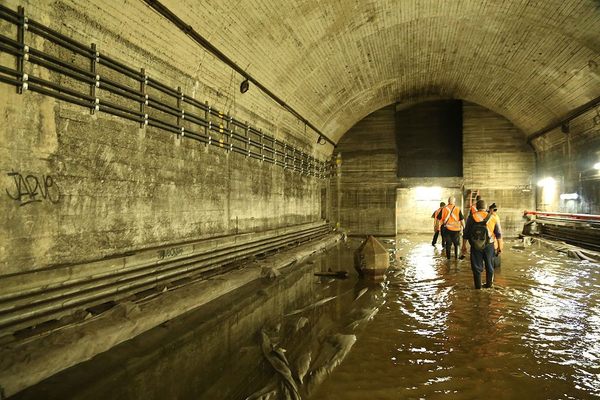Northeast Brazil Is Dotted With Millions of Enormous Termite Mounds
The soaring cones cover a landscape nearly the size of Great Britain.

A swarm of termites went to work. They darted in and out of tunnels, scuttling between narrow darkness and the hot Brazilian sun. Each time they emerged out into the thick and thorny Caatinga forest, on the country’s northeast edge, it was with a heap of earth. The termites added each load to the pile, which grew higher and higher into the shape of a cone.
Over millennia—there amid locusts and snakes and tangles of short, scrubby shrubs—the Syntermes dirus termites built an array of these mounds. Most cones stand at least eight feet tall and nearly 30 feet wide. And the termites are still at it.
The array is evenly spaced, and big—really, really big. The insects have engineered roughly 200 million mounds in all, across more than 88,800 square miles. Soil dating suggests that the oldest could have gone up roughly 4,000 years ago.
“They are massive and they are everywhere, they are just part of that landscape,” says Stephen Martin, an entomologist at the University of Salford, in England.
For years, though, they went largely unnoticed. “The mounds were always well ‘hidden’ in the regional Caatinga dryland vegetation, and not usually easily visible at all,” says Roy Funch, of the State University of Feira de Santana. Researchers were hard pressed to navigate through the Caatinga’s dense vegetation, which “sort of goes on forever,” Funch says. “It’s not a stroll in an open forest at all,” he adds. “It’s not hiking country.”

In a new paper in Current Biology, Martin, Funch, and and their collaborators report that the mounds came into view when forests were cleared to make way for roads or pastures, where cattle can graze on the hardscrabble land. When bulldozers come to topple the mounds, Funch gets a close-up look. “Roy is often there to see what is inside, [which is] a happy accident as it is impossible to dig into the mounds manually,” Martin says.
So what’s the inside scoop? In the hundreds of older mounds gashed open by construction, “you get good cross-sections of them, but there is never any internal structure,” Funch says. Ones in progress are shot through with a large central tunnel and branching, narrow corridors containing bits of dead leaves. These mounds aren’t nests, the authors suggest: They’re more like towering trash heaps, the product of the debris that termites excavate in order to open up arteries that give them easy access to leaf-litter across the forest floor.

As builders, the termites punched way above their weight. In all, the insects moved more than 10 cubic kilometers—the volumetric equivalent, the authors write, of 4,000 Great Pyramids of Giza.
Meanwhile, the termites keep on boring through the earth and stacking the debris. They’re a resilient bunch, and razing the mounds won’t trouble them much. “The real problem is when forest is removed,” Martin says, “since this removes the dead leaves, which is their food.” The World Wildlife Fund classifies the forest—which is home to hundreds of endemic species—as “vulnerable,” and reports that 50 percent of the terrain has been changed through agriculture or development. Less than one percent of the land falls inside protected areas, according to the WWF.
For now, at least, the mounds are reminders that humans certainly aren’t the only members of the kingdom Animalia with a knack for construction. There are examples on land, sky, and sea: The aptly named mason bee (Osmia avosetta) swaddles itself in a multi-layer cloak made from soil and flower petals; octopuses feather their underwater nests by arranging piles of shells. But the little termites undertook a mighty big project, Funch said in a release: “This is apparently the world’s most extensive bioengineering effort by a single insect species.”















Follow us on Twitter to get the latest on the world's hidden wonders.
Like us on Facebook to get the latest on the world's hidden wonders.
Follow us on Twitter Like us on Facebook